History of science
A nuclear explosion in the soul
Franco Rasetti was one of the physicists who laid the foundations of nuclear physics – and thus made the atomic bomb possible. Despite having the courage to say NO to the atomic bomb project, he was devastated by the effects of his discovery.
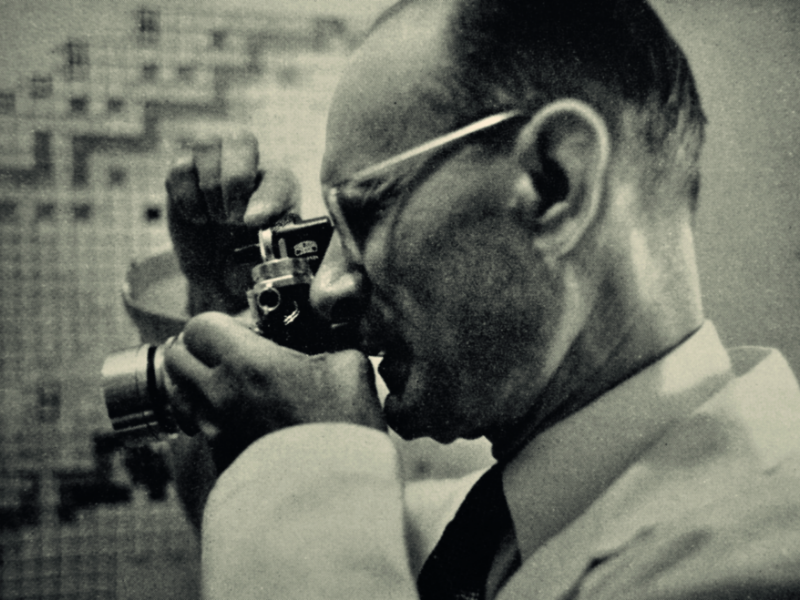
"La bomba, la bomba!” a 72-year-old man’s voice echoed through the corridors of the San Salvi psychiatric hospital in Florence. In 1973, 28 years after the tragedy of Hiroshima and Nagasaki, Franco Rasetti – one of the fathers of nuclear physics – had collapsed. All his life, reason had ruled over emotion. This time, the dam had broken, and he could find no rest. He was obsessed with the atomic bomb and horrified by its effects.
From insects to atomic nuclei
Franco Rasetti was a child prodigy. Born in 1901 in a small village in Umbria at the Tuscan border, he was privately educated by his parents. His father was a university professor of agriculture and his mother a painter. He had a genuine passion for Nature and an exceptional talent for mountain climbing. At only six years old, he could paint animals and plants like his mother and collected insects together with his father. At only seventeen, he published his first article on entomology and passed his Matura examination with honors ahead of time. Like most of the brilliant students in science of that time, he enrolled in engineering.
During his first months at the University of Pisa, he met an outstanding student of the same age: Enrico Fermi, future Nobel Prize winner. A deep friendship and intellectual esteem immediately developed between them. Fermi, a physicist by vocation, challenged and convinced him to change his course of study. Since those early days in Pisa, the two made an exceptional pair, Fermi the theorist and Rasetti the experimentalist. After a stay in America, where Rasetti carried out fundamental studies on the structure of the atomic nucleus, the two friends met up again as Professors at the University of Rome, where they were the cornerstones of the famous group of “The Via Panisperna boys”, named after the street where the physics institute was located. The atomic nucleus is made of protons and neutrons and, by playing with those particles, the “boys” built the foundations of nuclear physics.
An unexpected discovery
Fermi and Rasetti attracted talented students such as Emilio Segrè, future Nobel Prize winner, Edoardo Amaldi, one of the founders of CERN in Geneva, and Bruno Pontecorvo, one of the fathers of modern particle physics. Nuclear physics was booming, and the Rome group had a prominent role worldwide.
In October 1934, the “Panisperna” boys were shooting neutrons towards all materials to explore the unknown properties of artificial radioactive nuclei. By chance and against any prediction, they discovered that if the neutrons are slowed down by light materials such as water or paraffin, their capacity to induce nuclear reactions increased tremendously. As often happens in science, this work was purely curiosity driven and those young scientists did not realize the groundbreaking potential of their finding. Only the director of the physics institute, Orso Mario Corbino, foresaw valuable applications and forced his “boys” to file a patent. It was demonstrated in 1938 in Germany, that slow neutrons allow to break the Uranium nucleus, making available an unprecedented amount of energy. This is the principle on which nuclear power plants and the atomic bomb are based.
"My answer is NO and it is final!"
Franco Rasetti
From Rome to America
In 1938, the political situation in Europe was no longer bearable for a free spirit like Rasetti. The racial laws in Italy and the imminence of war led to the dispersal of the Rome group. After receiving the Nobel Prize, Fermi emigrated to the United States while Rasetti moved to Laval University in Quebec, where he is still remembered as one of the founders of physics in French Canada.
Magazine uniFOKUS
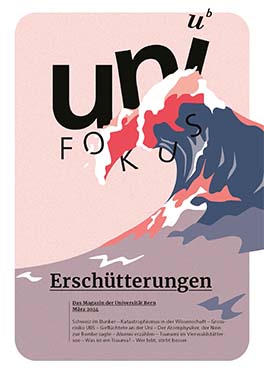
"Disruptions"
This article first appeared in uniFOKUS, the University of Bern print magazine. Four times a year, uniFOKUS focuses on one specialist area from different points of view. Current focus topic: "Disruptions"
More articles from this issue Subscribe to uniFOKUS magazineNo to the bomb
“It is useless to insist. My answer is NO and it is final!” With these words, Franco Rasetti, in an office at the University of Montreal, put an end to a discussion that had been going on for too long. A few days earlier, in September 1942, he had received an unusual invitation, which, however, had not surprised him at all.
He was offered work under ideal conditions, with a very attractive salary and with a prominent position within a highly strategic but secret project. Rasetti did not hesitate despite his very delicate status as an Italian national and thus as “enemy alien”. He was fully aware that he would thus forfeit power and glory and put himself on the fringes of the nuclear physics community. “It was a decision” – he later said – “that I have never regretted.”
About the author
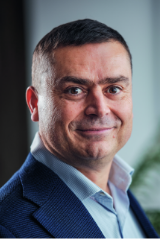
Saverio Braccini
is associate professor of experimental physics at the University of Bern, where he leads the research group on applications of nuclear and particle physics to medicine centered on the medical cyclotron in operation at the Inselspital Bern. He is passionate about the history of physics.
Yes to nature
At Laval, he immediately stopped all research on neutrons and turned his scientific interest towards natural sciences, his true passion since his youth. In particular, he started groundbreaking research on trilobites, extinct sea creatures of the Cambrian Period from around 500 million years ago, introducing many techniques typical of physics to paleontology. When he came to know about Hiroshima and Nagasaki, he was shocked and horrified. He could not forgive himself for the fact that his own work did not contribute to progress but to death and destruction. He felt that he had deeply offended the Nature he loved so much.
Right after the war, he wrote: “I have been so disgusted with the latest applications of physics – with which, thank God, I have managed to have nothing to do – that I am seriously thinking of no longer dealing with anything but geology and biology”. And so he did. He moved to the Johns Hopkins University, where he completely abandoned physics as a part of his teaching. His reputation in paleontology grew continuously until he became one of the world’s leading experts on Cambrian trilobites. In 1952 he was awarded the Charles Doolittle Walcott medal, the highest prize in this field. In the last part of his life, he became a globally recognized expert on alpine flowers. He died at the age of 100, but the moral wound caused in him by the atomic bomb had never healed.
History remains relevant
We are living in a time of great change and uncertainty. The topic of war has unfortunately become very relevant again, and we are witnessing the evolution of technologies - such as Artificial Intelligence – the consequences of which we cannot predict. The role of science in society is more topical than ever. I too wonder whether my findings in the applications of nuclear and particle physics to medicine – that I have dealt with passionately for the last twenty years – could one day, and against my will, become a means not of helping mankind but of destruction. On this subject, Rasetti said: “It would have been better never to have started those experiments. But it is impossible to stop the research”.
The book
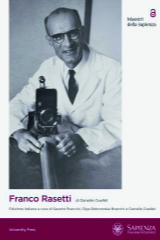
No alla bomba
Saverio Braccini, professor of physics in Bern, has co-authored a book about Franco Rasetti:
Franco Rasetti: Lo scienziato che disse no alla bomba, Saverio Braccini, Olga Bobrowska-Braccini, Danielle Ouellet, Sapienza Università Editrice, Maestri della Sapienza, 2023.
Open Access PDF: www.editricesapienza.it/book/8442
Subscribe to the uniAKTUELL newsletter
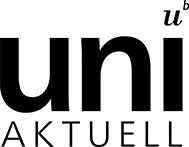
Stories about research at the University of Bern and the people behind it – gripping, multimedia and free of charge.